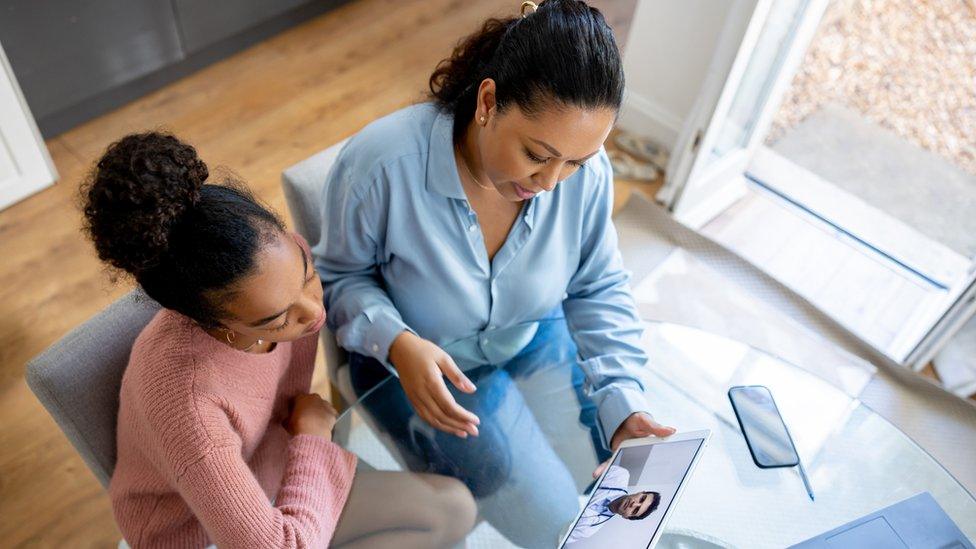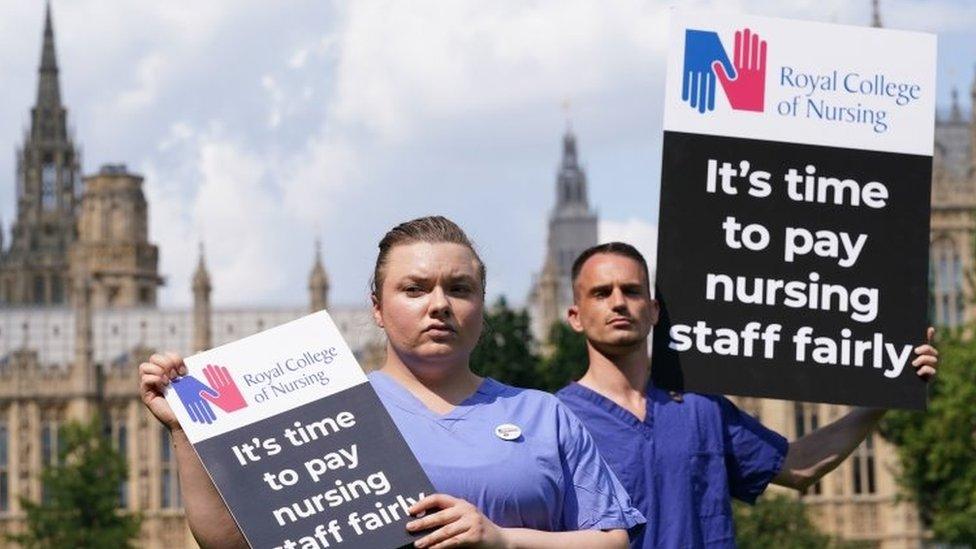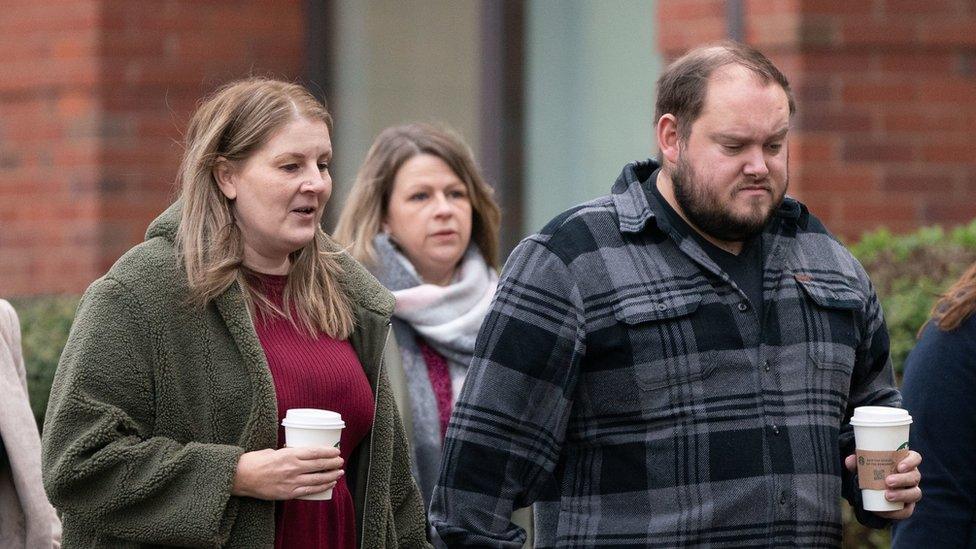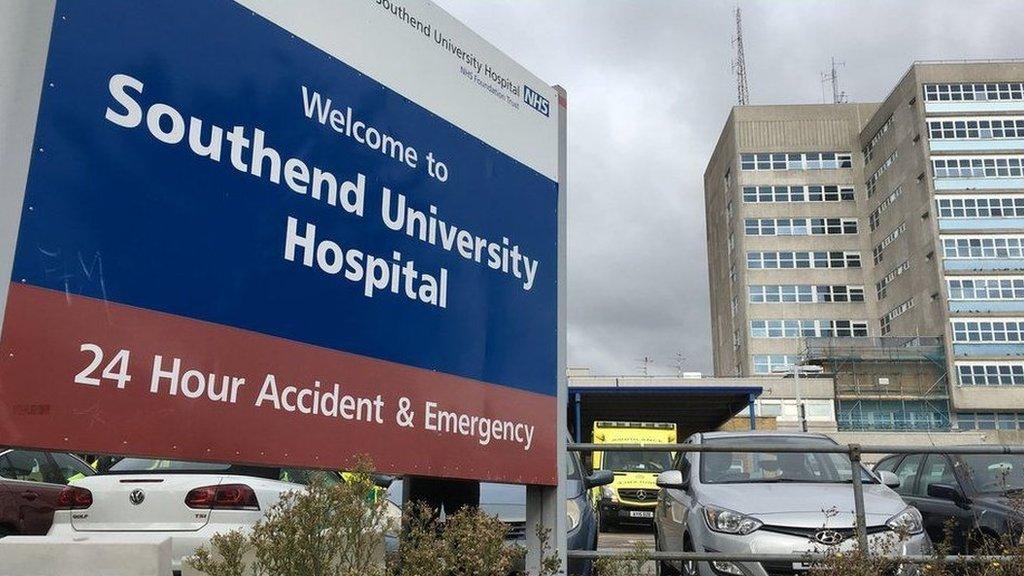NHS: More at-home care offered in attempt to shorten waiting times
- Published

Plans to open more so-called virtual wards for patients in England are to be announced by the government.
The measures will enable some, particularly the frail elderly, to be monitored at home by doctors using video and other technology.
There will also be more community teams to visit people in their homes.
It comes amid intense pressure on the health service and a dramatic deterioration in waiting times for urgent care.
In December, the average ambulance response time for emergencies like heart attacks exceeded 90 minutes - five times longer than the target - while over a third of patients waited more than four hours to be seen at A&E.
On Monday, the government and NHS England will publish the Urgent and Emergency Care Plan, outlining steps intended to bring waiting times back down.
The aim of virtual wards is to support mostly elderly patients, as well as those with respiratory conditions, in their own homes rather than hospitals.
Doctors and other health staff review their cases each day and patients using wearable devices can report daily readings and results so they can be remotely monitored.
Patients can receive home visits where necessary, and the technology can also be used to reduce the risk of falls.
There will be a target of up to 50,000 people being supported in this way each month, up from around 10,000 at the end of last year.
There will also be more community response teams aiming to get to vulnerable patients within two hours - officials say up to 20% of hospital admissions are avoidable with the right care in place.

The BBC's Jim Reed takes an interactive journey through a hospital to find out what's causing the NHS winter crisis
Watch now on BBC iPlayer (UK only)


Existing examples already in place include a scheme in Hull which brings together fire, ambulance and community services. They are sent to elderly people who have had a fall and need non-urgent support.
A London Ambulance pilot scheme also dispatches paramedics and nurses to frail patients in their homes.
Health and Social Care Secretary Steve Barclay said: "By expanding the care provided in the community, the most vulnerable, frail and elderly patients can be better supported to continue living independently or recover at home."
NHS England chief executive Amanda Pritchard said the plan was to build on initiatives introduced this winter.
"Boosting care in the community and treating more people at home is key to recovery," she said. "It is better for patients and their families, as well as easing pressure on NHS services."


It is hoped the plan to be set out on Monday will help free up capacity in hospitals, but the measures are not designed to be in place until next winter and won't address immediate challenges.
As well as slow response times, recent weeks have seen ambulances stuck outside hospitals and unable to hand over patients to overcrowded A&E departments.
The strain has eased a little with falling numbers of admissions for flu and Covid patients, but hospital leaders are concerned that this winter may yet bring renewed pressure.
NHS Providers, representing trusts in England, said managers were having to cope with unsafe levels of bed occupancy and more needed to be done to tackle sky-high staff vacancies and escalating strike action.
Related topics
- Published14 March 2024

- Published2 May 2023

- Published27 January 2023

- Published26 January 2023

